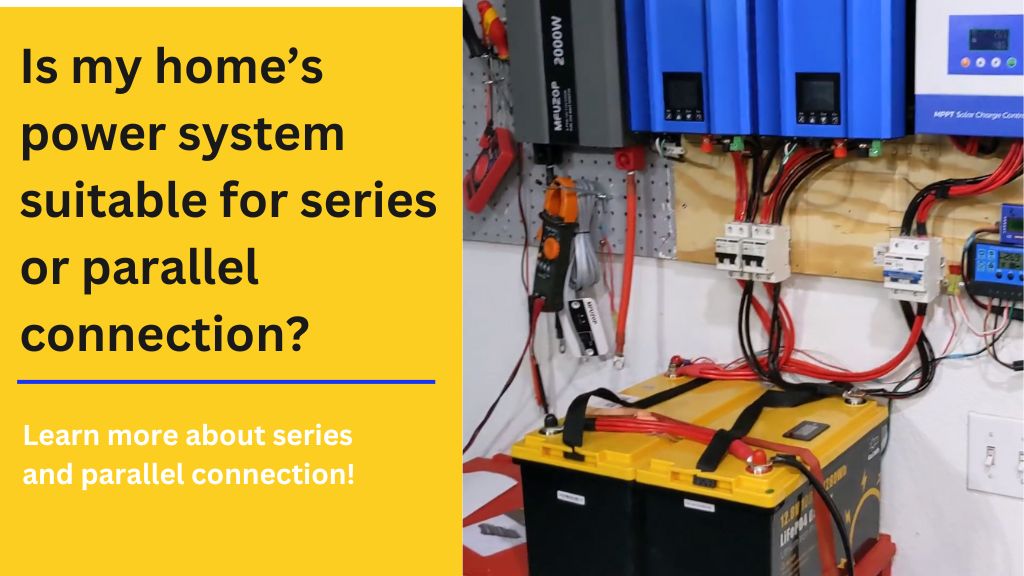EU Stock EnjoyCool Link is On Sale with $400 off!

Series & Parallel of LiFePO4 Battery -What kind is suitable for me?
As an LFP battery DIY enthusiast, one important decision you will face is how to connect multiple batteries together – in series or parallel. In this article, I will introduce the basic concepts of series and parallel connections, their pros and cons, common usage scenarios and important precautions to take.
What are series and Parallel connections?
Let’s first clarify the definitions:
Series connection means connecting the positive terminal of one battery to the negative terminal of the next battery end to end. This increases the total voltage.
Parallel connection means connecting all the positive terminals together and all the negative terminals together. This increases the total capacity (mAh) while keeping the voltage the same.
Advantages and Disadvantages
Series connection:
- Higher voltage output which is needed for applications like electric vehicles
- Balanced current load on each battery
However, the capacity remains the same as one battery. There is also a risk of overcharging some batteries if their capacities are uneven.
Parallel connection:
Increases total capacity which is great for applications needing long runtime like solar homes. Each battery charges independently so there is less risk of one failing affecting the whole pack.
However, the voltage stays the same and currents between batteries may become unbalanced over time.
Common Usage Scenarios
Series is commonly used for electric bikes, vehicles, boats that need higher voltages like 24V, 36V, 48V etc.
Parallel is suitable for home backup power, solar systems, RV/marine applications where high capacity matters more than voltage.
Precautions
Batteries connected either way must be of the same capacity, age and brand to ensure even charge/discharge.
Use a BMS to monitor each battery’s voltage and prevent overcharge/discharge of any one battery.
Consider wiring, fusing, casing carefully for safety and balanced performance long-term.
In summary, series connections increase voltage while parallel increases capacity. Consider your power needs first before deciding between the two. Let me know if you need any clarification or have additional questions!



